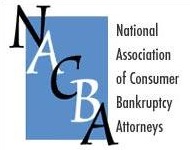 Taxes are one of the means test expense items that I have labeled as a gamechanger.
Taxes are one of the means test expense items that I have labeled as a gamechanger.
Those gamechangers are entries on B-22 where a thorough bankruptcy lawyer has an opportunity to significantly alter the disposable monthly income.
Facility here starts with the concept that the “right” tax figure may not be what’s been withheld from the debtor’s paycheck.
Expenses are forward looking
With the exquisite logic found in the means test, we’re projecting the debtor’s expenses in the future and deducting them from historic income.
So the question for Line 25 is not what was historically withheld or even, necessarily what was owed last year. It’s what will it take to pay the coming year’s taxes.
When life unchanged
If you expect the debtor’s income and deductions to remain essentially constant, your first step is to check the last year’s tax return. If the debtor got a meaningful refund, federal and/or state, then the withholding on the paychecks you’re working from is too large.
Most simply, you need to reduce the monthly tax withholding on Line 25 by 1/12th of the net refund.
If the debtors got an $18,000 refund, as my clients of last week did, the monthly withholding needs to be $1500 less than the paychecks show as withheld. I found on Bankruptcy Pro, I could enter a negative number for the adjustment and get the correct figure.
If the debtor owed taxes in the prior year, you need to add taxes to the historic withholding, so that withholding closely matches tax obligation.
Reverse the calculation above: from the last return, take the amount of the taxes owed in excess of withholding and add 1/12th of that number to the amount you are showing as withheld in the paychecks you are working from.
And then
Don’t forget to check both state and federal returns.
Also, if your client is significantly underwithheld for the current tax year, consider how they are going to catch up before next April.
The figure we’ve calculated above will get the right amount withheld going forward, more or less, but it does nothing for the shortfall that underwithholding has created for the year of filing.
Next time we’ll think a bit about taxes when the tax terrain is changing.
Check out the new version of my site Bankruptcy In Brief.
I’m putting the final touches on a revamp of the site I created starting in 1998 at moranlaw.net. There’s still work to do, but I’m pleased with the progress and grateful to designer Cynthia LaLuna for the “look” and Jay Fleischman for some real grunt work in making the transfer and for chivying me along to recreate internal links and a more modern rewrite.
Image: © kasparart – Fotolia.com







